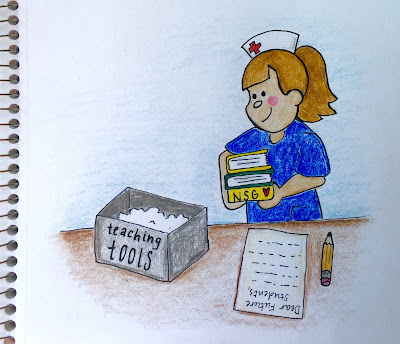Once
upon a time, there was a nurse who believed that all nursing education was just
as she had experienced. It was the 20th
century, and it was dull and dreary, full of lecture and passive learning.
One
day, in the fifteenth year of her nursing career, the nurse decided to go back
to school, to learn how to become a 20th century nurse
educator. But because fifteen years had passed
since the nurse had been in school, it was a new age in nursing education. It was the 21st century, and it
was bright and exciting, full of active learning and student-centered teaching
strategies! The nurse was so relieved to
find such a bright future awaited her, where she could bring her creativity and
her love of nursing to the classroom, to grow the next generation of caring,
competent and holistic nurses.
Technology in
the 21st Century Classroom
I encourage you to take a moment to watch this
video, How to Use Technology in Education.
This is one of the better videos I have viewed on 21st
century classrooms and technology. How
do we meet the needs of the 21st century learner? Technology is not the sole solution. We must look at the whole picture, including
learning styles and other teaching strategies.
On the other hand, technology needs be integrated into the whole
curriculum and applied in ways that are meaningful for learning. Integrating technologically-enhanced teaching
strategies aids the movement away from fact-based learning, into a deeper,
higher level learning and development of critical thinking skills.
Transitioning
to 21st Century Nurse Educators
Finally, for the future nurse educators, I leave you
with three links to help you transition into your new roles:
From Janice Petrella Lynch (2016), Sage
advice: Motivational teaching strategies for nurse educators. This is a conglomeration of wisdom for nurse
educators around the world. There is a
lot of great advice here!
From Penn, Wilson & Rosseter (2008), Transitioning
from Nursing Practice to a Teaching Role. This article from the ANA is for
nurses considering a role in education and gives a great overview of nursing
education in the 21st century.
From LinkedIn SlideShare, (2014), Nurse
Educator Interview Questions. This
slideshow gives an overview of what to expect on your first interview for a job
in nursing education. (I am saving this
link for me!).
Until my next adventure,
Crystal


